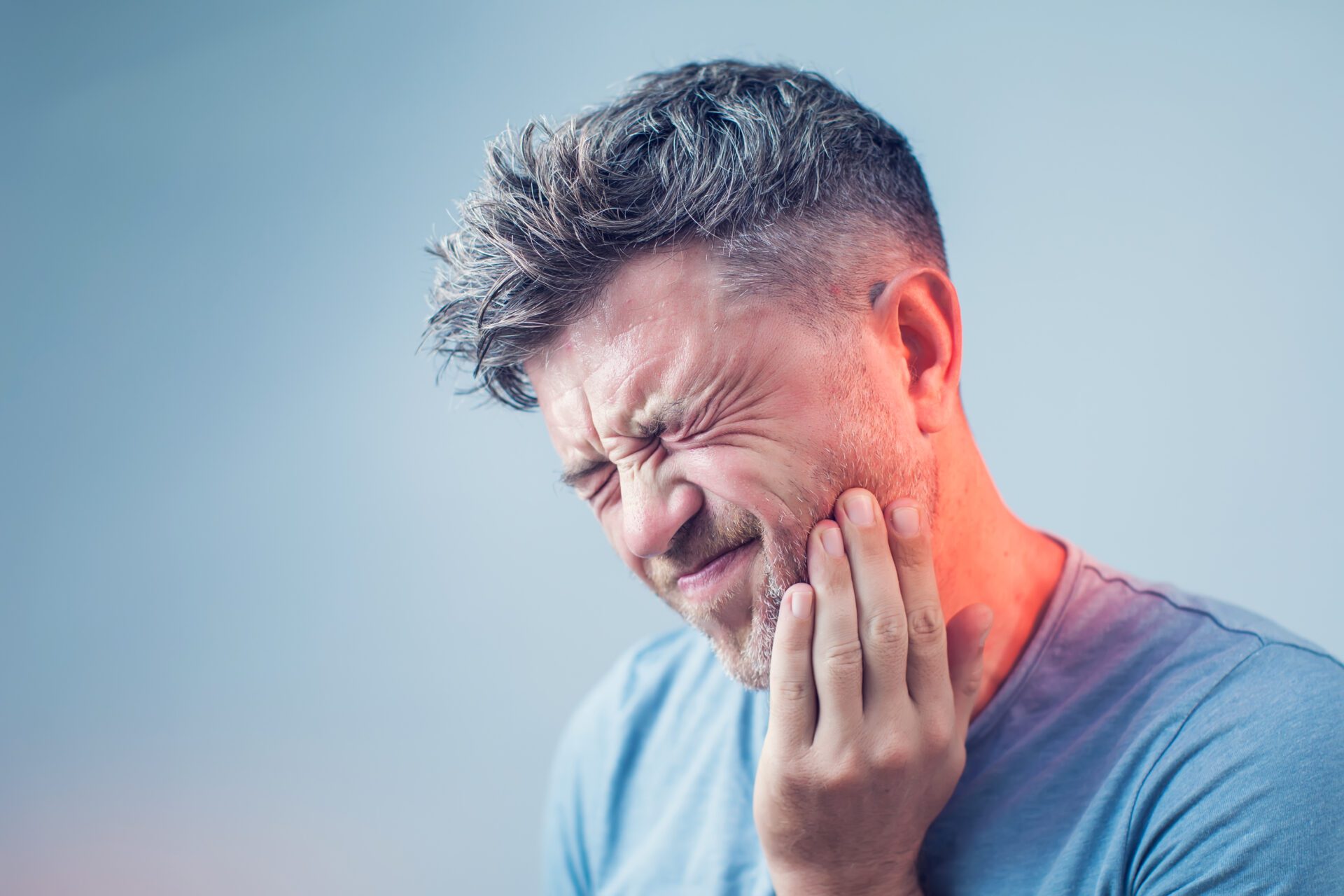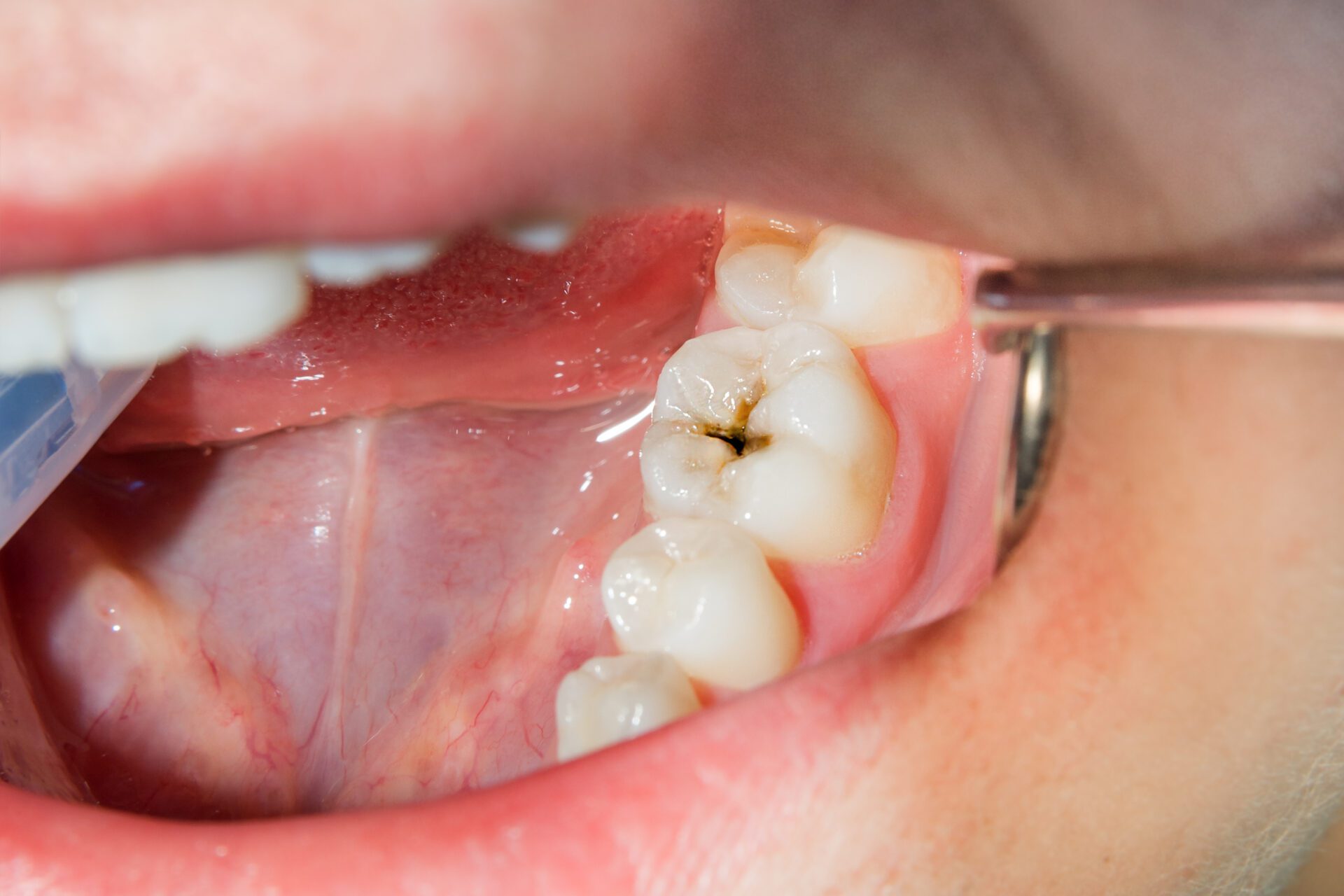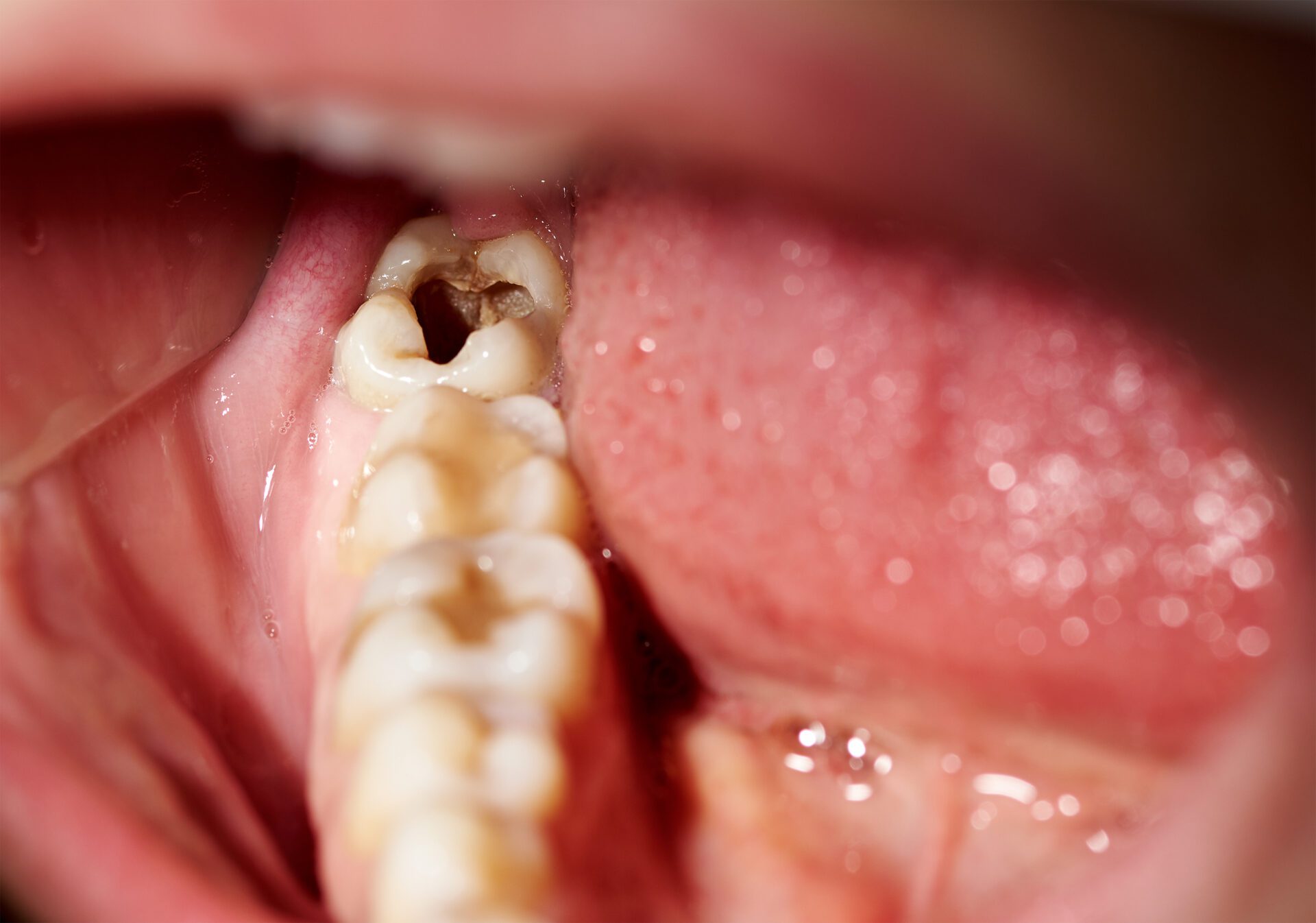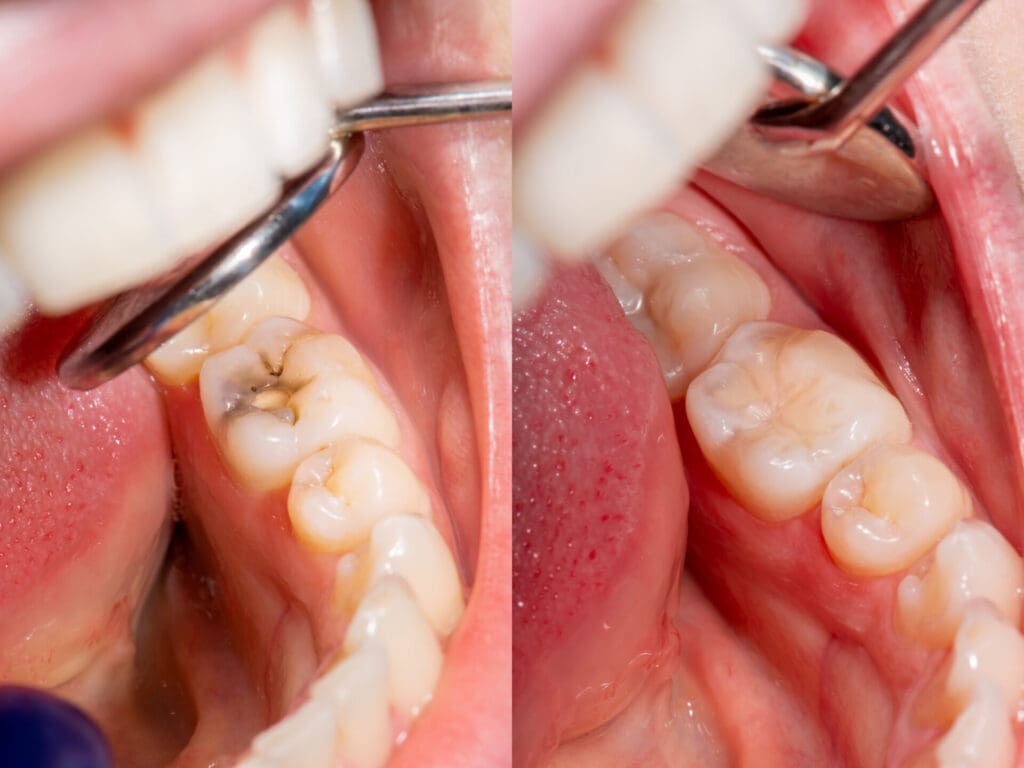Cavities are holes in teeth caused by decay. They are common oral health problems that can occur when plaque, a sticky film of bacteria, builds up on teeth. The symptoms of cavities are explained below. If cavities aren’t treated, they can lead to pain, infection and even tooth loss.
Knowing the signs and symptoms of cavities can help you get treatment early and prevent more serious dental issues. Here are 5 of the most common signs and symptoms of cavities.
1. Toothache

One of the classic signs of a cavity is a toothache. You may feel a sharp pain when eating or drinking something hot, cold or sweet. As the decay gets worse, you may have pain even without any trigger. It may start and stop, but don’t wait for it to become constant!
If you have any tooth pain, see your dentist in Penticton right away. The sooner you treat a cavity, the better.
2. Sensitivity
Your teeth may become extremely sensitive to hot, cold, sugary or acidic foods and drinks. You may find yourself avoiding these items because they cause a sharp pain.
Temperature changes can also trigger sensitivity if you have a cavity. Even breathing cold air can suddenly hurt! This sensitivity is a warning sign that you have tooth decay. Make an appointment with your Penticton dentist to find and treat any cavities.
3. Visible holes or pits

Cavities start as tiny holes in tooth enamel. As they grow, they become darker, wider pits. You may be able to see a dark spot on your tooth, indicating a cavity.
The hole may appear black, brown or tan. It may feel gritty or rough if you run your tongue over it. Visible pits are a sure sign you have decay. Book an appointment with your dentist right away to prevent more damage.
4. Bad breath
Noticeable bad breath can signal oral health problems like gum disease and cavities. The bacteria that cause cavities and inflamed gums can produce foul-smelling compounds.
If you notice a bad taste or smell from your breath, it may be a sign of a cavity. Make sure to brush and floss thoroughly. If it persists, see a dentist to rule out cavities, gum disease and other issues.
5. White, brown or black stains
Discoloured spots on your teeth can indicate areas affected by decay. Cavities themselves may appear as white, brown or black spots.
Bacteria in plaque produce acids that degrade tooth enamel. As the enamel loses minerals, it can become discoloured and develop a stained appearance. The color is determined by which minerals are lost. Get any new stains or spots checked out promptly to prevent extensive cavities.
What Do Cavities Look Like?

Cavities can appear in different forms depending on their severity and location. Early cavities may look like white, brown or black spots on tooth surfaces. As they enlarge, cavities become darker pits or holes in the enamel. Surface cavities tend to be on the chewing surfaces, sides or necks of teeth. Root cavities form in the roots below the gum line.
Smooth surface cavities start as grooves, while pit and fissure cavities develop in the tiny dents and ridges on biting surfaces. The decay usually first damages the weaker enamel and then eats into the stronger dentin underneath.
Untreated dentin cavities can reach the soft pulp chamber and cause severe toothaches. That’s why it’s critical to recognize the early signs of cavities and get them filled by your dentist before they grow larger and invade more of the tooth structure.
What Causes Cavities?
Acids attack and demineralize the hard tissues of teeth – the enamel, dentin, and cementum – causing cavities. Plaque bacteria metabolize carbohydrates from foods and drinks to produce this acid. Sticky foods like candy, cookies, chips and soda cling to teeth and feed the plaque bacteria.
As the bacteria digest the sugars and starches, they create lactic acid as a byproduct. This acid can lower the mouth’s pH and dissolve the mineral content of tooth surfaces, leading to caries lesions or cavities.
The most common cavity-causing bacteria are Streptococcus mutans and Lactobacillus. Saliva helps neutralize the acids and remineralize early cavities, but over time the damage can lead to larger holes. Good oral care, less sugar, and fluoride can stop cavities by changing bacteria’s environment and making teeth stronger against acid.
How to Prevent Cavities

Protect your pearly whites by brushing properly with fluoride toothpaste, flossing daily, limiting sugary/acidic foods and visiting your dentist regularly for cleaning and checkups. If you notice any symptoms of cavities like pain or sensitivity, schedule an appointment right away.
The sooner you treat decay, the better! Untreated cavities can lead to severe tooth pain, tooth abscesses, and eventually tooth loss.
Don’t wait until you have a painful problem. Catch issues early and maintain excellent oral hygiene to avoid cavities and other dental issues. Keep your smile healthy with preventive dental care!

